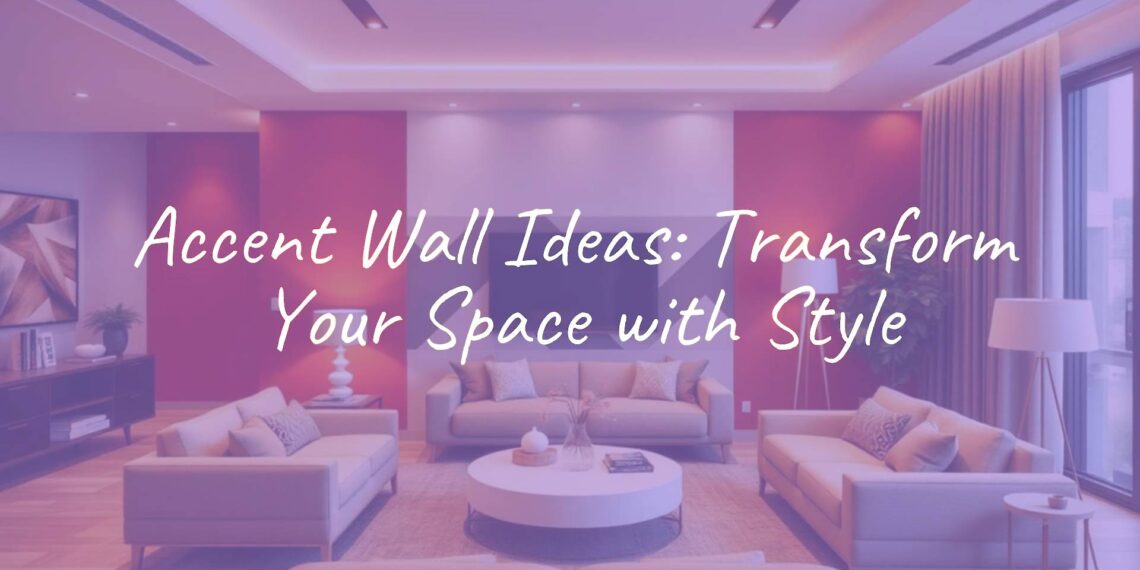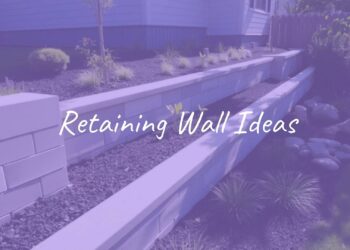An accent wall, also known as a feature wall, is when one wall in a room is given a different look than the others. This can be done with paint, wallpaper, wood panels, or even art. The main goal is to draw attention, make the space more interesting, and show some personality. Accent walls are a great way to bring in bold colors or interesting designs without changing the whole room. Whether you want to brighten up a simple room with strong colors or add soft tones to a small area, an accent wall is a simple way to make a big difference.

What Is an Accent Wall?
An accent wall is a design step where you make one wall in a room stand out by giving it a different color, texture, or material. This breaks up the look of having all the walls the same and helps focus attention on a special spot. Accent walls can be used in almost any room, big or small, and they can change the way the space feels.
How Does an Accent Wall Change a Room?
An accent wall can easily change the look and feel of a room. By choosing a different color or adding new textures, the room can feel bigger, more cozy, or just more lively. For example, a dark wall can make a space feel more comfortable, while a light or textured wall can make it seem larger. It’s also a way to try out new colors or patterns without updating the entire room. Accent walls are especially good for adding depth to plain rooms or for making open spaces feel more interesting.
Which Rooms Work Well with Accent Walls?
Accent walls can go in almost any room. Bedrooms and living rooms are common choices, but they also work in bathrooms, hallways, home offices, or laundry rooms. In small spaces like powder rooms, a bold wall can make a big impact since there is less wall space to cover. Entryways and hallways also benefit from an accent wall, making a strong first impression. Any area where you want to highlight a feature or simply add character is a good candidate for an accent wall.
Popular Accent Wall Materials
There are many ways to make an accent wall besides just using paint. Each material brings its own style and texture, letting you be as creative as you want. Below are some of the most common types:
| Material | Look/Feel | Where to Use |
|---|---|---|
| Paint | Easy, flexible-choose any color | Any room |
| Wallpaper/Wall Murals | Detailed, patterned, or even large pictures | Living rooms, bedrooms, offices |
| Wood/Shiplap | Warm, natural, rustic or modern | Bedrooms, living rooms |
| Brick/Stone | Textured, old-fashioned, strong | Kitchens, living rooms, entryways |
| Tile/3D Panels | Shiny, textured, unique patterns | Bathrooms, kitchens, home offices |
| Metal/Other | Modern, industrial, different | Modern rooms, offices |

Painted Accent Walls
Paint is the most affordable and flexible way to create an accent wall. You can pick any shade, from soft colors to dark, bold ones. You can also use paint in creative ways, such as two-tone designs or freehand wall art. Paint is a simple way to try a new look, and it’s easy to change if you want something different later.
Wallpaper and Wall Murals
If you want patterns or eye-catching designs, wallpaper or murals work well. Wallpaper comes in many styles, from simple shapes to plants or abstract prints. Wall murals can turn a wall into a giant picture or scene and often take less time to put up than covering the whole room in wallpaper. Both can make a wall stand out with little work.
Wood and Shiplap Accent Walls
Wood brings warmth and texture to a room. Shiplap, with its boards running side to side or up and down, gives a classic or country feel. Other wood panels (including painted ones or special patterns) can make your space more modern. Special wood slats can also help with sound and give the wall a stylish texture.

Brick and Stone Feature Walls
Brick or stone walls give a room a solid, historic feeling. Brick is great for an industrial feel, while stone makes a space look calm and elegant. You can use real stone, fake stone, or even tile that looks like brick for the effect. These walls work well in living areas, kitchens, or entry spaces.
Tile and 3D Panel Accents
Tiles aren’t just for bathrooms-they can create patterns and color on any accent wall. You can choose from geometric tiles to shiny Zellige squares for a fancy touch. 3D wall panels made from different materials can add texture and also help with sound, which is helpful for home offices or media rooms.
Unusual Materials Like Metal
If you want something completely different, you can use metal sheets or panels. These offer a modern, cool look, similar to what you might find in a high-tech space. While less common, metal accent walls are a way to set your room apart.
Trending Accent Wall Colors and Patterns
Accent wall trends change as interior design changes. New colors and patterns show up all the time. Below are some of today’s most popular ideas:
Popular Paint Colors for Accent Walls
- Rich browns: Like Benjamin Moore’s Wenge or Bittersweet Chocolate for a luxurious touch in dining rooms
- Naturals and greens: Such as Fernwood Green, for a soft, earthy feeling
- Bold yellows: York Harbor Yellow or Golden Retriever for lively rooms
- Blues: Ranging from dark navy to light sky blue for calmness in bedrooms and living rooms
- Black: Tricorn Black or Black Tar for a dramatic, stylish look
Should an Accent Wall Be Dark or Light?
Designers usually recommend making the accent wall darker than the other walls, so it stands out. This creates a strong point of interest. If your walls are already dark, using a lighter accent wall can also work to make the wall pop. The main thing is to pick a color that stands out, so the wall gets attention.
Fun Patterns: Geometric, Two-Tone, and Murals
Patterns can make an accent wall special. Geometric shapes, either with paint or panels, give a modern look. Painting half of a wall one color and the other half another (two-tone) looks good in both kids’ rooms and grown-up spaces. Hand-painted murals, such as florals or abstract designs, bring personality and art to a room. Features like extra paneling or trims can also add quiet designs to a wall if you prefer texture over strong colors.

Accent Wall Color Trends for 2025
Colors expected to be popular in 2025 include warm neutrals like camel, beige, and taupe. These shades work well with natural textures and a modern look. Bright blues, like Santa Monica Blue, will add cheerful color. Earthy tones, such as muted plums and browns, will also grow in popularity, offering color that feels down-to-earth and stylish.
Accent Wall Ideas by Room
Choosing the right accent wall idea depends on what each room needs. Here are some suggestions for different areas of your home:
- Bedroom: Use the wall behind the bed. Try a soft mural, bold wallpaper, or wood paneling to create a relaxing or standout spot.
- Living Room: Highlight where you relax most-behind a sofa, fireplace, or TV. Brick, stone, or patterned wallpaper work well here.
- Dining Room: Paint one wall a rich color or use a dramatic design. Shelves with bold colors can also make a big impression.
- Kitchen: Use colorful tile, or paint behind open shelves or pantries. You could also use wallpaper behind a breakfast nook.
- Bathroom: Try bold colors, tiles, or even a mirrored wall for dramatic effect in small spaces like powder rooms.
- Entryway/Hallways: Pick a strong color or gallery wall for a memorable first impression.
- Home Office/Nooks: A mural, bold paint color, or textured panels make even small workspaces feel special.
Ways to Decorate Accent Walls
Decorating your accent wall is about more than just color. Here are some creative ways to make it stand out:
- Gallery wall: Hang different art pieces, photos, or unique items in a fun arrangement. Mix sizes and frame styles for interest.
- Wallpaper and Art: Hang large art over patterned wallpaper for an eye-catching mix.
- DIY Murals: Try hand-painting your design-florals, shapes, or patterns tailored to your style. It doesn’t need to be perfect!
- Functional Walls: Add shelves or cabinets, turning your accent wall into a storage spot as well as a design feature.
- Plants and Textures: Mount small shelves for plants or hang baskets for natural texture.
- Moldings and Trim: Add paneling, unique molding, or wood trim for extra depth and detail.

Budget Accent Wall Ideas
You don’t have to spend a lot to get a great accent wall. Here are some ideas to save money:
- Paint: A single can of paint can cover a wall. Simple patterns like stripes or even a homemade mural are also affordable.
- Removable Wallpaper: Peel-and-stick wallpaper lets you add style, and you can easily remove it later-great for renters.
- Fabric & Tapestries: Hang a large piece of fabric or tapestry instead of painting or wallpapering.
- Repurposed Decor: Use items you already own, such as plates or baskets, or buy cheap frames from thrift stores and spray paint them for a fresh look.
Frequently Asked Questions About Accent Walls
What Should I Think About When Choosing an Accent Wall?
Pick a wall that you want to make the focus. This is often a wall with a bed, fireplace, or something you want to highlight. Make sure the color or texture fits in with the rest of the room and doesn’t clash with other features.
Can I Have More Than One Accent Wall?
Most designers say one accent wall per room is enough. If you add more, it can get busy and take away from each wall’s importance. Choose your spot carefully for the best effect.
Is It OK to Do an Accent Wall as a DIY Project?
Yes! Painting is the easiest way to start, and even if you want to hang shelves or add peel-and-stick wallpaper, many projects are easy to do yourself. There are lots of tutorials online for all skill levels.
Will an Accent Wall Work in a Small Room?
Yes, accent walls are great in small spaces. They add interest and can even make a small room feel bigger if you choose the right colors. In a tiny room, sometimes the accent wall becomes the main decoration.
Are Accent Walls Still Trendy?
Yes, accent walls are still popular. The key is to pick a style and color that feels right for you. Both bold and neutral accent walls are used today, so you can match your wall to your own style.
How Do I Choose Which Wall to Highlight?
Pick a wall that naturally stands out-behind a bed, sofa, or fireplace, or a wall that frames an important piece of furniture or art. If your space is open, use an accent wall to mark off a part of the room, like a dining nook. Think about where your eye naturally settles when you walk in, and start there.
















![What to with Scrap Metal? [infographic]?](https://facts-homes.com/wp-content/uploads/2019/07/645413-POPYOV-391-120x86.jpg)





